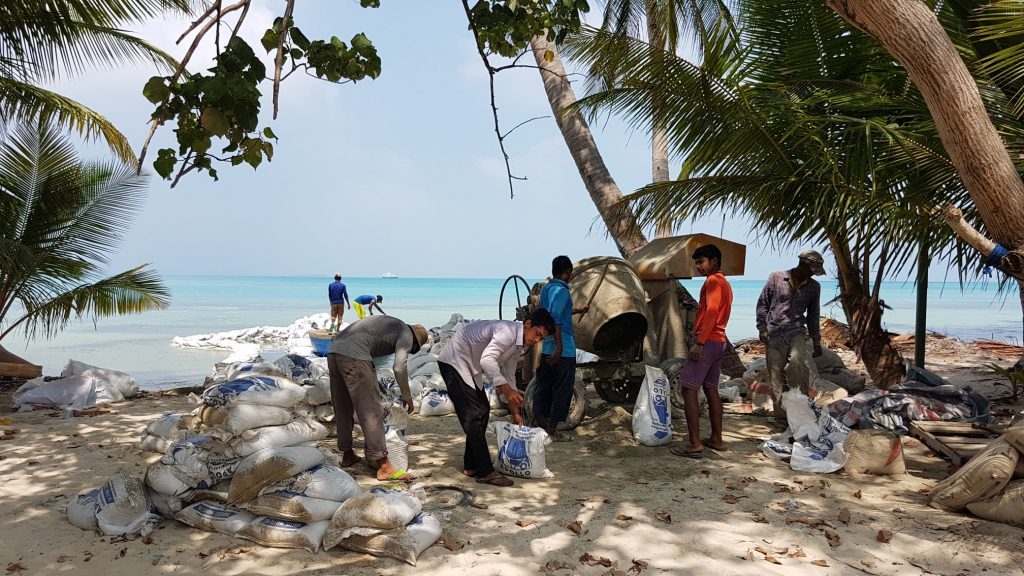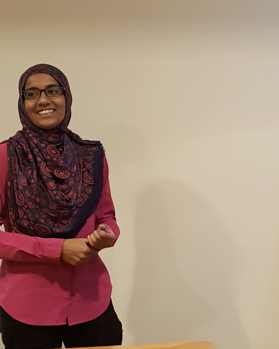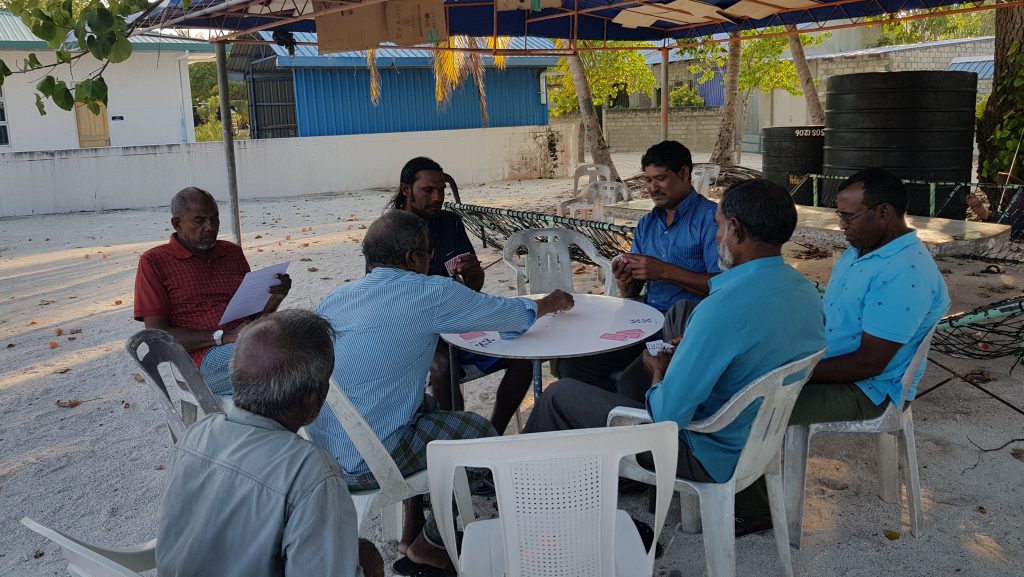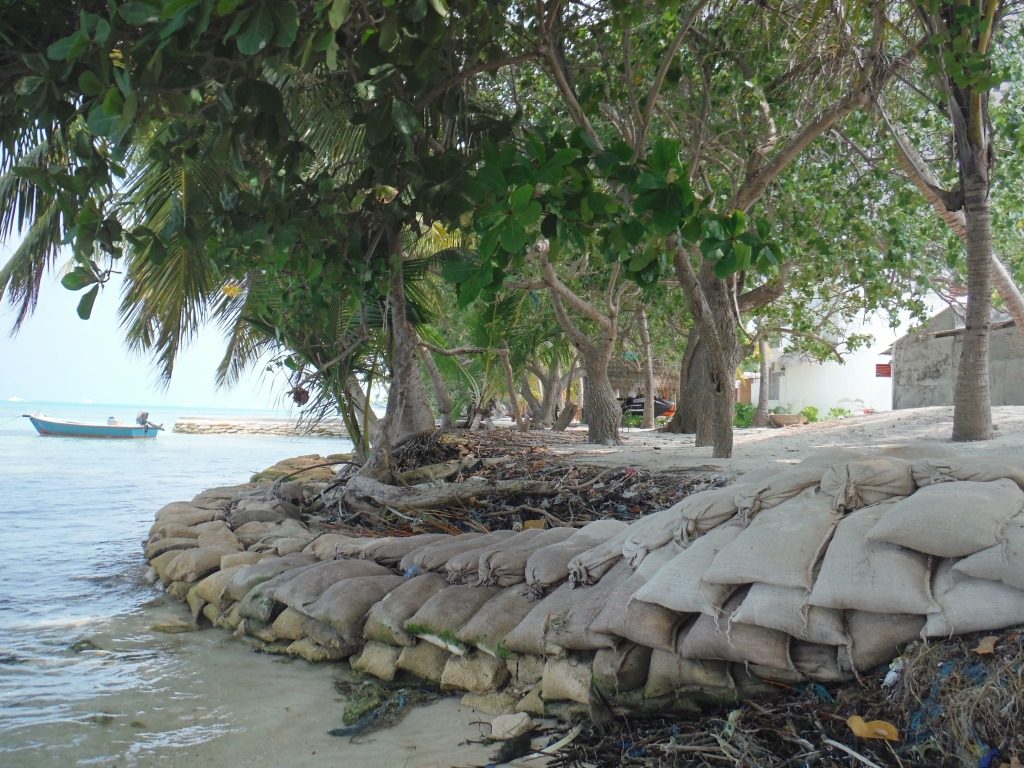
Reflections on community, education and nature in the Maldives

From its inception, this research project was designed as an ethnographic study, where the researchers would spend long periods of time immersed in the communities that were being studied. As a school teacher by profession, I am a novice in this kind of research and the value of the ethnographic approach became more apparent to me as the project progressed. Although I was conducting research among fellow Maldivians, new facets of life in the communities came to light with each visit to the islands.
Community reactions
Maldivians are often depicted as a homogenous group of people. However, there are clear differences between communities when you look close enough. Since our research required a lot of interaction with community members, one thing that stood out was the difference in how people interacted with strangers.
All of the communities that we studied had small populations, so we were immediately noticeable as outsiders. The communities seemed different from the outset with regard to how they responded to us. On one of the islands, where the community had a long history of interactions with outsiders, people showed curiosity and usually asked us who we were, initiating new conversations. On another island, the people were less likely to initiate conversation, perhaps assuming that we were of the many who had moved to the island for work in one of the nearby resorts. People in all of the communities were willing to share their stories and respond to our queries, once we had started a conversation. If we were introduced by someone in the community, the acceptance and openness was usually immediate and people often went out of their way to help us. They also treated us as old friends on subsequent visits. In this respect, the similarity between communities only became apparent once we had got past the differences on the surface.
 Schooling on Malé
Schooling on Malé
Life in small island communities is different in many ways to life in the overcrowded urban city of Malé. These differences could explain certain difficulties that some children face when they move to Malé to study. In their home islands, the children are probably part of a wider community where they are known. The other students in the class as well as the teachers know them and their families, and there is a shared sense of belonging. This is very different compared to when they move to a school in Malé’, with classmates and teachers from different parts of the county or, indeed, the world. As a teacher, I am now more aware of the need to address challenges children might face in adjusting to new social situations, in addition to the differences in the academic aspects of school.
These challenges go beyond the school environment. There was a time in Malé when people knew almost everyone by sight and could identify any newcomer straight away. While Malé today is full of strangers, the high levels of familiarity are still the case in many small islands. This allows a greater degree of freedom for children in particular, as parents are more willing to let children play in public areas with the assurance that they will be looked after. We visited islands where the whole community appears to look out for the children and the youth. When children move to Malé, guardians are often justifiably hesitant to let them go outside and the children may end up feeling trapped in their homes. On the other hand, the children allowed to go out could fall into trouble, with no larger community to look out for them. While being part of a small community where everyone knows everyone offers greater security, it does mean a lesser degree of privacy compared to Malé, where neighbours could go for days without interacting.
Environmental expertise

One thing I was struck by during my research on the project is the immense amount of knowledge that the people we met had about their physical environment. They had experienced and thought about things that I could only have read about in a textbook. For example, fisherfolk told me about using the long-distance swell waves (distinct from local wind waves) to navigate in the open ocean during the day and described patterns of fish movement around the country throughout the year. Other people talked about how certain gardening practices affected the groundwater quality. Such knowledge is gained through experience, mostly out of necessity, and is highly relevant to people’s everyday lives. I now have a much greater appreciation for knowledge gained directly from people dwelling in particular environments, rather than knowledge about the environment gained from secondary sources.
One thing I was often told as a teacher trainee was to take into account students’ prior knowledge and experiences in designing lessons. This experience has given me an awareness of the various types of prior knowledge students may possess, based on their varied life experiences in their communities. While our syllabi are designed with a global view, it is essential, not only to acknowledge traditional knowledge as a starting point for designing relevant lessons, but to also include this rich knowledge in the curriculum. This is in order to pass it on to new generations that are growing increasingly distant from the natural environment, and to further develop our rich traditional knowledge base.
This research project has given me the opportunity to spend extended periods of time in island communities and explore life in these communities as I have not done before. This has been a very valuable experience, not only as a researcher, but also as a teacher and as an individual.

0 Comments